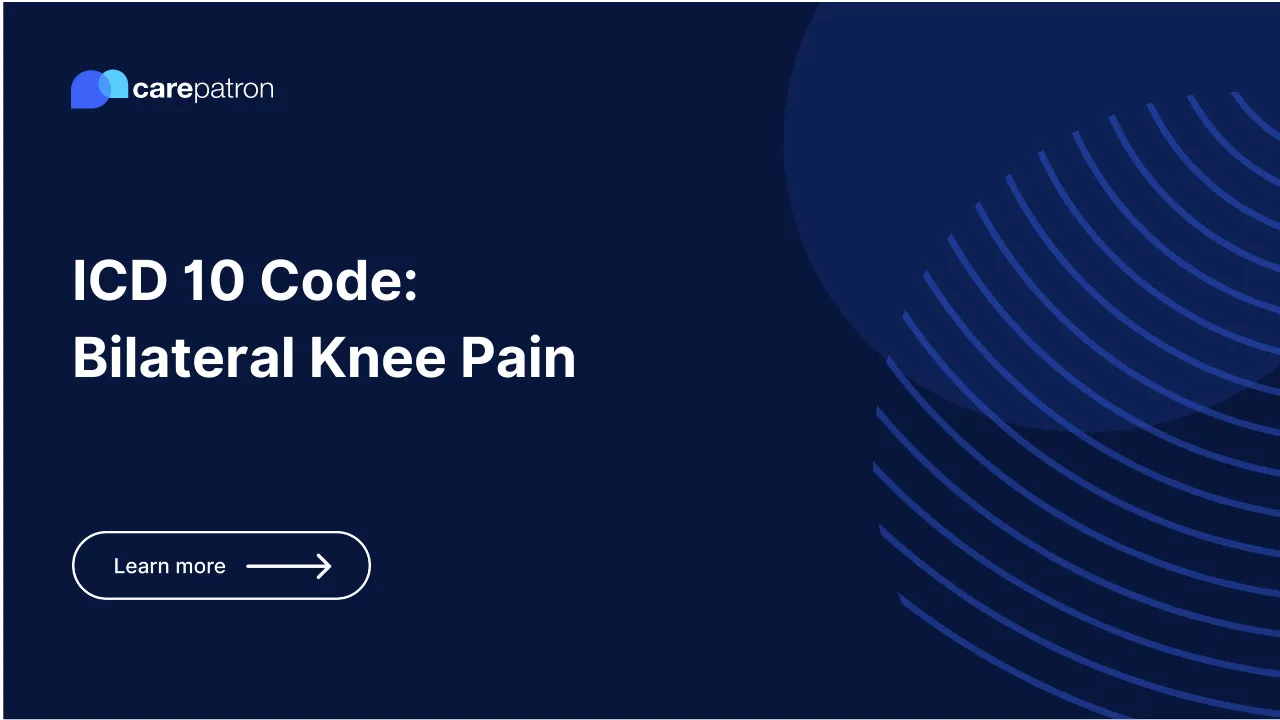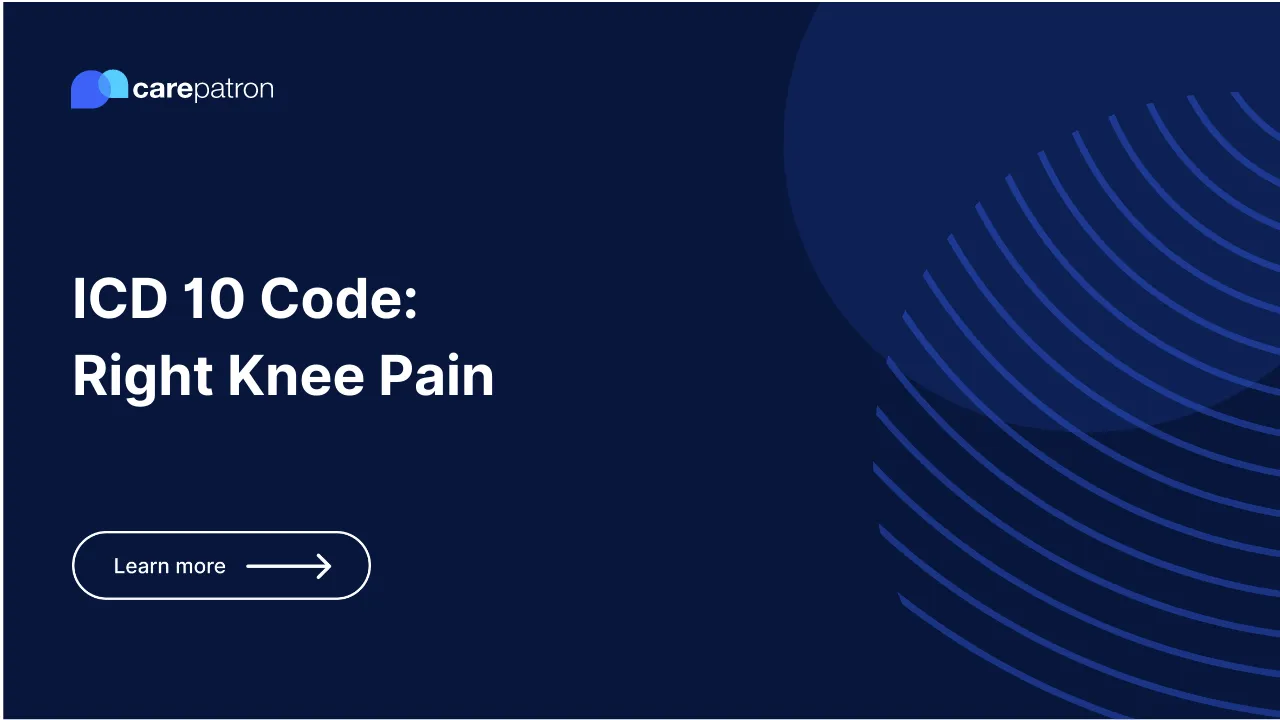Compression Fracture ICD-10-CM Codes
Read this short guide to learn about Compression Fracture ICD codes you can use!

What Compression Fracture ICD codes can I use?
If you’re looking for Compression Fracture ICD codes to use, there are two particular search terms that you can use for it: collapsed vertebra and wedge compression fracture.
Using these search terms will pull up lots of ICD codes. Here are examples for both:
For collapsed vertebra:
- M48.50XA - Collapsed vertebra, not elsewhere classified, site unspecified, initial encounter for fracture
- M48.50XD - Collapsed vertebra, not elsewhere classified, site unspecified, subsequent encounter for fracture with routine healing
- M48.50XG - Collapsed vertebra, not elsewhere classified, site unspecified, subsequent encounter for fracture with delayed healing
- M48.50XS - Collapsed vertebra, not elsewhere classified, site unspecified, sequela of fracture
Collapsed vertebra is another way of saying compression fracture because the partial collapse of a vertebra characterizes such fractures. The weakening or traumatic injury of the spine can cause compression fractures.
Here are a few things to note about these four ICD codes:
- Not elsewhere classified means there are no specific ICD codes for the problem based on the descriptions given by the healthcare provider, so this is the next best thing to use if the type of compression fracture you’re dealing with has no specific ICD code
- Site unspecified means that the particular vertebra where the compression fracture is located
- Initial encounter means that the patient is receiving active treatment for it
- The subsequent encounter means that the patient is already recovering from it but is still being given active/routine care. In the case of the ICD codes above, the healing is either routine or delayed.
- Sequela means the patient is dealing with the aftereffects of the problem. Given this, this ICD-10 code should be accompanied by two other ICD-10 codes, one of which should designate the sequela’s nature, while the other should describe the sequela (meaning its effects).
For wedge compression fracture:
- S22.000A - Wedge compression fracture of unspecified thoracic vertebra, initial encounter for closed fracture
- S22.000B - Wedge compression fracture of unspecified thoracic vertebra, initial encounter for open fracture
- S32.000A - Wedge compression fracture of unspecified lumbar vertebra, initial encounter for closed fracture
- S32.000B - Wedge compression fracture of unspecified lumbar vertebra, initial encounter for open fracture
There are many ICD codes for wedge compression fracture. We only picked four codes; thus, we can note a few things.
Wedge compression fracture ICD codes vary based on the vertebra's specific parts. There are many codes for the thoracic and lumbar vertebrae, with codes specific to each part (e.g., first thoracic vertebra, first lumbar vertebra, and so on).
Once the specific part of either region has been identified, please use the appropriate ICD code instead of the unspecified ones listed above.
These codes have the initial encounter label on them, so you can expect that they also have subsequent encounter and sequela codes. The most significant differences you need to note are the open and closed fracture terms. An open fracture means that the bone is sticking out of the skin. A closed fracture means that the fracture isn’t sticking out of the skin.
Are these Compression Fracture ICD codes billable?
Yes. All of the aforementioned Compression Fracture-related ICD-10 codes are valid and billable.
Clinical information about compression fractures:
Compression fractures are characterized by the partial collapse of a vertebra (hence the collapsed vertebra ICD codes) because of pressure exerted on a particular part of the spine. With enough pressure, a bone in the spine can become broken.
The most common type of compression fracture is a wedge compression fracture, characterized by the front of a vertebral body collapsing, but the back remains intact. This results in a wedge-shaped bone.
Earlier, we gave four examples of wedge compression fractures. If you’re wondering why there aren’t examples for the cervical spine, there are no ICD-10 codes for cervical spine wedge compression fractures. Such fractures commonly occur in the thoracic and lumbar regions.
Those with compression fractures might experience pain or numbness in their back, arms, and legs. They might also experience a loss of height.
Commonly asked questions
Another type of compression fracture is multiple compression fractures, characterized by having more than one vertebral compression fracture. This can make a person’s upper back curve forward into a hunchback position.
Sports injuries and car accidents can cause compression fractures. Even spinal tumors can cause it. But the most common cause is osteoporosis. As we get older, we become more at risk of developing osteoporosis, which means we also get compression fractures.
It depends on how severe the compression fractures are. If they’re not extreme, wearing a back brace should be able to remove the pressure from the affected spinal region. The fracture should heal in three months at least.
If the fractures were caused by osteoporosis, then calcium, Vitamin D, and bisphosphonates should help treat the osteoporosis and fractures. Weight-bearing exercises can also help.
Surgery is the best option for severe cases to restore spine stability.







.webp)
.webp)
.webp)
.webp)
.webp)
.webp)
.webp)
.webp)
.webp)
.webp)
.webp)
.webp)
.webp)
.webp)
.webp)
.webp)
.webp)
.webp)
%2520(1).webp)
.webp)
.webp)
.webp)
.webp)
.webp)
.webp)
.webp)
.webp)
.webp)
.webp)
.webp)
.webp)
.webp)
.webp)
%2520(1).webp)
.webp)
.webp)
.webp)
.webp)
.webp)
.webp)
.webp)
.webp)
.webp)
.webp)
.webp)
.webp)
.webp)
.webp)
.webp)
.webp)
.webp)
.webp)
.webp)
.webp)
.webp)
.webp)
.webp)
.webp)
.webp)
.webp)
.webp)
.webp)
.webp)
.webp)
.webp)
.webp)
.webp)
.webp)

.webp)
.webp)
.webp)
.webp)
.webp)













.webp)
.webp)




.webp)


